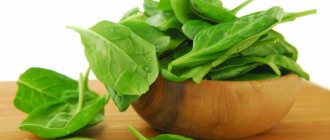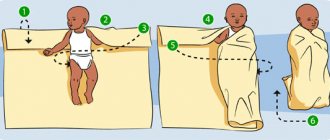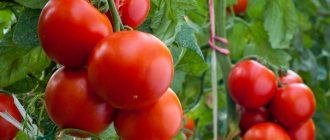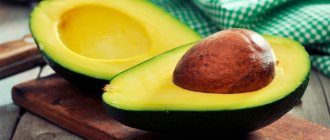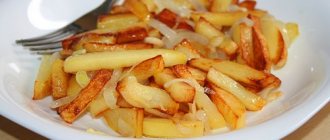The birth of a baby is an exciting moment for parents. Wanting to give the newborn the best, many mothers load up on different foods and sometimes don’t think about how beneficial or harmful a particular food is for the baby. A controversial product during breastfeeding is tomato paste. On the one hand, tomato is beneficial for the human body, but on the other hand, it is one of the allergens. To be or not to be tomato sauce in the diet of a nursing mother is the topic of our discussion today.
Properties of tomato paste
The tomatoes from which this component is produced have a rich taste and contain many useful and nutritious substances. Vegetable pulp contains a large amount of vitamin C (ascorbic acid, B vitamins, vitamin E and PP. Tomato juice contains tyramine, which has a positive effect on a person’s mood.
Tomatoes are a low-calorie vegetable recommended for consumption by people prone to obesity. The juice has a diuretic and choleretic effect, so its use is recommended for people suffering from diseases of the urinary and digestive systems. Thanks to its chemical composition, the juice of this vegetable can influence the level of blood clotting, preventing the formation of blood clots.
Tomato contains chemicals that affect sodium metabolism in the body.
Is it possible for a nursing mother to use tomato paste?
After the birth of a child, a woman receives medical advice regarding diet while breastfeeding. This is important, since all substances consumed with food enter the newborn’s body through breast milk. Natural juice contains a powerful dose of vitamin C, which is beneficial for the body of mother and child.
The composition of tomato paste includes the following substances:
- vitamins (C, E, PP, A, B, K);
- antidepressant - serotonin;
- Microelements (zinc, sodium, potassium, magnesium, iron).
Nursing mothers are not prohibited from consuming this product, subject to the following recommendations:
- A nursing woman should not include products containing tomato juice in her diet in the first 2-3 months after giving birth, even if the child is not prone to developing allergic reactions. If the baby is prone to allergies, then the mother is advised to refrain from eating tomatoes for the entire period of lactation.
- When eating dishes that contain tomato pulp puree, the mother should carefully monitor the reaction of the newborn’s body. When the first signs of an allergy appear, the product should be completely avoided.
- It is recommended to eat a homemade product. If it is not possible to prepare pasta, then when purchasing a finished product, you should pay attention to its composition. High-quality tomato paste should not contain preservatives, dyes, thickeners or other chemicals.
- Tomato paste should be introduced into the diet gradually. The initial dosage is ½ tsp. for 150-200 g of finished dish.
- If, while eating tomatoes, the baby does not develop an allergy, intestinal colic or other negative reactions do not appear, then the woman can gradually increase the amount of this product during cooking.
- You should not eat dishes with the addition of tomatoes more than once a week, as this provokes increased gas formation in the intestines of the newborn.
- Negative reactions from the body of a newborn baby may appear several days after a nursing mother has eaten dishes with the addition of tomatoes. Alarming symptoms are an allergic rash on the baby's skin, redness of the skin, frequent crying and whims of the child, refusal to feed, bloating, and intestinal colic.
If a baby develops one of the alarming symptoms, the young mother is advised to completely stop eating foods containing tomatoes and tomato juice.
In order to timely track the cause of negative reactions, it is recommended that a nursing mother acquire a diet diary, in which she should note all the foods consumed daily.
How to replace tomato paste
When preparing certain dishes, you cannot do without red vegetable puree, since without this additive the taste of the food is lost. But if a nursing mother cannot afford to consume tomato paste, sautéed skinless tomatoes fried with bright beets will come to the rescue (this is an excellent option for homemade borscht).
For second courses, instead of tomato sauce, you can use steamed tomatoes, spices and bell peppers. Grind all ingredients on a fine grater and add to hot food.
Remember that allergic reactions may not appear immediately as soon as you eat borscht with tomato paste or another dish containing tomatoes. The baby’s stomach may be upset even the next day after the mother has tasted the “forbidden fruit.” To make it easier to track the reasons why your baby is worried, keep a food diary and fill it out throughout the entire lactation period.
Tomato paste is listed among the foods that women are not recommended to eat while breastfeeding. By conducting the first tasting when the newborn reaches 4 months of age, the mother will protect him from serious allergic reactions.
As for tomato juice, you should also not drink it uncontrollably. If your baby tolerates tomatoes well, it is enough to drink 1 glass of vegetable juice every day. Salted fruits can be eaten no more than 3 pieces. per day. This is quite enough to feed the mother’s body with useful substances.
Beneficial properties of tomato paste for a nursing mother
Tomato paste is a dietary product recommended for people who are trying to avoid gaining extra pounds. In addition, if it is made from high-quality raw materials, then there is a positive effect on the functioning of the body’s circulatory system, blood clotting and the condition of the skin.
Contains:
- Serotonin;
- Vitamins - A, B, C, E, K, PP;
- Iron;
- Zinc;
- Sodium;
- Potassium;
- Magnesium.
It is unlikely that it will be possible to say with confidence that tomato paste during breastfeeding will not harm the health of the baby and mother. Not all manufacturers are honest towards the consumer, and often violate the technological process.
Starch, stabilizers and preservatives are added to tomato paste in huge quantities, and this will definitely not bring benefits even to absolutely healthy people.
When making high-quality paste from tomato pulp, additional components are added to the product to a minimum, since the concentration of nutrients in good vegetables is already high.
Can a nursing mother have tomato paste and in what quantities?
The product under discussion is included in the list of prohibited products immediately after childbirth and for a long time after. Everyone knows that brightly colored foods are prohibited for women during lactation.
Tomatoes are a strong allergen and can cause a rash on the baby’s skin, as well as bloating, colic and obstruction in the still fragile intestines.
Tomato paste should be treated with great caution. It is not recommended to use it for the first 2-3 months after childbirth. Then you can gradually introduce dishes containing this ingredient into your diet.
The first portion should be half a teaspoon per 200 g of the finished dish.
The reaction should be expected within a few days, which means you should not eat such food again. Even if your baby is not predisposed to allergies, you still need to wait.
In case of a negative result, the introduction of the product should be postponed for a month, and sometimes even forget about its existence for the entire duration of lactation.
And yet, is it possible to use tomato paste while breastfeeding if the first introduction of it into the diet was without consequences? A taboo can be placed on this product only in critical situations, when the mother or baby suffers from allergies or other ailments, in which you should not get carried away with tomato paste. In other cases, lactation is not a reason to forget its taste.
You can eat dishes with tomato pulp paste, but without fanaticism.
Even six months after giving birth, they are allowed no more than once a week!
Otherwise, you can provoke increased gas formation in the newborn.
It is important to understand that the reaction may not appear immediately, but after several days or even a week. Therefore, overeating on tomato delicacies is strictly prohibited.
It is difficult to answer the question with 100% certainty whether a nursing mother can have tomato paste. We can say with certainty that its use is unacceptable immediately after childbirth. Afterwards, everything will depend on the predisposition of the child’s body to allergic reactions, colic and other troubles.
In any case, it is better to give preference to homemade pasta or expensive options from the store, with a minimum content of all kinds of chemical additives.
The baby was born and no longer lives inside you, but you still watch your diet, since you are feeding your baby with breast milk. There are plenty of food taboos for nursing mothers. And if smoked, fried, pickled foods do not raise any questions on the list of prohibitions, then not all nursing women are ready to exclude tomatoes from the diet, and this is not without reason.
Tomatoes during breastfeeding: salted, tomato paste and juice
12.08.2018 | 1799
Tomatoes during breastfeeding (BF) are on the list of allowed foods for many mothers. The vegetable is rich in vitamins, macro- and microelements necessary for the body to recover after pregnancy and childbirth. But how and when to introduce tomatoes into your diet?
Composition and benefits of tomatoes
Eating tomatoes has a beneficial effect on the health of mother and child during breastfeeding: the peel of the vegetable cleanses the intestinal walls, and its seeds thin the blood. The benefits of this product are as follows:
- strengthening the cardiovascular system and skeleton;
- participation in the process of hematopoiesis;
- stabilization of the nervous system;
- cleansing the intestines of waste and toxins;
- improvement of immunity;
- normalization of the mother’s hormonal levels (yellow fruits);
- increased hemoglobin levels in the blood;
- getting rid of edema;
- making homemade face and hair care products.
The tomato also has its downsides. You should stop using it if:
- proneness to allergies;
- problems with stool and gas formation;
- the presence of nitrates in imported vegetables;
- gastric acidity disorders;
- exacerbation of diseases of the biliary tract or genitourinary system.
Below is a table detailing the list of beneficial substances in tomatoes.
Table 1 - Chemical composition and BJU of tomato
Nutrient: Quantity in product: Daily value: % of day. norms:
| Calorie content (kcal) | 14 | 1424 | 1 |
| Proteins (g) | 0.6 | 82 | 0.7 |
| Carbohydrates (g) | 2.9 | 128 | 2.3 |
| Vitamin A, RE (mcg) | 83.3 | 900 | 9.3 |
| Beta carotene (mg) | 0.5 | 5 | 10 |
| Vitamin C, ascorbic acid (mg) | 20 | 90 | 22.2 |
| Vitamin K, phylloquinone (mcg) | 7.9 | 120 | 6.6 |
| Potassium, K (mg) | 243 | 2500 | 9.7 |
| Phosphorus, P (mg) | 35 | 800 | 4.4 |
| Cobalt, Co (µg) | 6 | 10 | 60 |
| Manganese, Mn (mg) | 0.14 | 2 | 7 |
| Copper, Cu (µg) | 110 | 1000 | 11 |
| Molybdenum, Mo (mcg) | 7 | 70 | 10 |
Tomatoes can have radically opposite effects on the body. Some elements in the vegetable can cause allergies in a child. On the other hand, they are also a strong antioxidant that protects DNA, prevents the development of cancer and stops the aging process of tissues.
Is it possible to eat tomatoes (and products based on them) while breastfeeding?
As already mentioned at the beginning of the article, tomatoes (tomatoes) are not on the list of prohibited foods, which means they can be consumed by the mother after childbirth in the absence of contraindications. [2]
Effect on lactation and milk composition
Mothers are often warned to avoid consuming gaseous foods, which include tomatoes. However, gas and fiber do not pass into breast milk [2].
Tomato is considered one of the healthiest foods for nursing mothers: it is rich in iron, which helps in blood formation, and dietary fiber helps prevent constipation. One tomato contains 40% of the daily requirement of vitamin C, which helps the immune system of both the nursing mother and the newborn.
The tomato ranks fourth in terms of lycopene content, a pigment that determines the color of the fruits of some plants.
Studies have shown the benefits of lycopene in the prevention of cancer and cardiovascular diseases [3].
However, some babies experience colic or become irritable when a nursing mother eats a tomato, so it is important to monitor the baby's reaction to this food.
Introduction to the diet of a nursing mother
It is better to start with yellow, orange or green varieties. The reaction should appear over the next two days, and if this is not observed, then you can start eating tomatoes without fear. The maximum daily dose of vegetables is 3 fruits.
It is better to eat tomatoes stewed. After heat treatment, even red tomatoes become less allergenic than yellow ones.
To track the reaction and control portions of vegetables (if the newborn is predisposed to allergies), it is recommended that a nursing mother keep a food diary: there you need to enter data about the foods eaten and their quantity.
Why can’t you eat tomatoes during breastfeeding?
The only contraindication to eating tomatoes is the child’s predisposition to an allergy to the product or the mother’s individual intolerance to tomatoes.
Tomato products: types and effects on lactation
Next, we will consider the most popular tomato-based products in Russia: tomato paste, salted tomatoes and tomato juice.
Salted tomatoes
Pickled or salted tomatoes during breastfeeding may be contraindicated due to the large amount of salt they contain, which retains fluid in the body and impairs lactation if consumed in excess.
However, there have been no clinical studies proving the harm of salty foods during breastfeeding, so sometimes you can still treat yourself to a salted vegetable in limited quantities.
Are tomatoes and lactation compatible?
The Italians call the tomato the golden apple - pomo d'oro. Its “precious” properties, unlike taste, are not known to everyone. Meanwhile, this is truly a golden vegetable (by the way, botany classifies it as a berry). But during lactation, pediatricians and nutritionists recommend minimizing the consumption of tomatoes. This is due to the likelihood of an allergic reaction, since these vegetables, as well as tomato sauces and pastes, are highly allergenic foods.
Due to excessive consumption of tomatoes by a nursing mother, the child may develop an allergy
Composition and beneficial properties of tomatoes
Swedish researchers have found that tomatoes contain genes that can help treat cancer. The Japanese discovered decainic acid in the “golden apple,” which lowers the content of “bad” cholesterol and fats in the liver and blood. Tomatoes are rich in vitamins, macro- and microelements. These substances, useful to the human body, are also necessary for a woman feeding a child. Thanks to them, the following improvements occur in a woman’s body:
- metabolic processes are normalized;
- blood pressure and the likelihood of thrombosis are reduced;
- the functioning of the heart and digestive tract improves;
- immunity is strengthened;
- mood improves;
- The overall tone of the body increases.
Table: composition of tomato fruits and percentage of daily intake
Tomatoes help you lose weight, which is important after childbirth - 100 g of edible pulp contains 19.9 kilocalories. These vegetables have choleretic and anti-inflammatory properties.
However, this natural source of vitamins also has contraindications:
- cholelithiasis;
- pancreatitis;
- gastritis with high acidity;
- stomach ulcer;
- diseases of the joints and kidneys.
Possible harm to mother and baby
A tomato eaten by the mother, as a vegetable with a bright red color, can cause allergies in the child. Due to the high acid content in tomatoes, intestinal problems may occur in an infant. It is assumed that a tomato eaten by the mother will cause colic in the baby. To find out whether a mother can eat tomatoes without harming the baby, she needs to try them.
The nature of infant colic does not yet have a clear scientific explanation, so it is not known whether the food eaten by the mother can be “blamed” for its occurrence.
Can I eat tomato sauce while breastfeeding?
In everyday life, we are all accustomed to using various additives in food to enrich the taste of ready-made dishes: ketchup, mayonnaise, adjika.
But how useful are such products during lactation, and is it possible to eat, for example, tomato sauce while breastfeeding? Let's look into this in more detail, look at the composition of such products and draw conclusions - this will be useful for all nursing mothers.
Tomato sauces: analyzing the composition
It would seem that any tomato sauce should be healthy, because it is made from tomatoes, and this is a natural vegetable. In fact, everything is far from so simple, because, in addition to the tomatoes themselves, ketchups contain several other ingredients.
If we look at the counter of any store, we will see at least a dozen varieties of tomato sauces. In large supermarkets there are usually even more of them, and they all differ in volume, composition and price. What is the reason for this difference?
In fact, the price of any tomato sauce directly depends on its quality.
The cheapest ketchups and sauces usually contain a minimum of natural ingredients. They are based on tomato paste made from low-quality tomatoes, and various chemical dyes, thickeners, stabilizers and flavorings are used as additives.
Naturally, such a sauce cannot bring any benefit. Even if it has a bright taste, most often this is due to the unnatural components included in its composition. Such sauces are usually sold in plastic bottles or bags and have a fairly long shelf life, which again indicates a significant amount of harmful substances that artificially prolong the life of the product.
High-quality ketchups and tomato sauces can never be found in plastic packaging - they are usually sold in glass containers.
They contain real tomatoes and exclusively natural additives. The price of such sauces is quite high, and once opened they do not last long, since the lack of preservatives does not allow maintaining the freshness of the product for a long time.
Is it possible to have tomato sauce while breastfeeding?
Cheap sauces can cause allergies in both the nursing mother and her baby. In addition, they contain excess salt and sugar, which means such products can cause excess weight.
Cheap ketchups are generally not recommended for consumption not only by nursing women, but also by everyone else.
High-quality ketchups and tomato sauces are much safer than their cheap counterparts, so those who cannot refuse such additives during lactation should buy only expensive products with a natural composition.
When choosing high-quality ketchup, you should pay attention to additives. So, for example, even natural garlic, cilantro and other spices with a strong taste can worsen the taste of breast milk.
It is strictly forbidden to use tomato sauces during lactation if the baby is allergic to tomatoes.
How to use tomato sauce during lactation
Despite the fact that tomatoes themselves are not among the foods that can cause severe allergies, a new product introduced into a baby’s diet can cause stomach upset and skin rashes.
Ketchup or tomato sauce should be introduced gradually - no more than 1-2 teaspoons per day, but not earlier than the child is six months old. In this case, it is imperative to monitor the baby’s condition and, if an allergic reaction occurs, postpone taking this product to a later period.
Homemade tomato sauce while breastfeeding
Allergies most often manifest themselves to store-bought ketchups. For tomato sauce prepared independently, it occurs only in rare cases, so you should not refuse such a product.
Homemade tomato sauce recipe for nursing
To protect yourself and your baby, try making your own tomato sauce at home.
- You will need fresh juicy tomatoes, which you need to mince or finely chop in a blender.
- After this, you can add chopped fresh herbs, natural herbs and spices to the resulting puree.
- It is better to avoid salt altogether, or add a small amount of sea salt.
We eat it fresh or you can simmer it over low heat for 30-40 minutes. In the latter case, the sauce can be stored in the refrigerator for 3-4 days.
As you can see, tomato sauce can be very beneficial during breastfeeding, but only if you know exactly what ingredients it was made from.
mama-news.ru
When can tomatoes be introduced into the diet of a nursing woman?
Breastfeeding specialists, nutritionists and experienced mothers believe that tomatoes can be consumed when the baby is three months old. But this does not mean that a nursing woman can consume this vegetable in unlimited quantities. Any new product is introduced gradually so that it is possible to track the child’s reaction.
To track the reaction to the baby's body, the woman must first try a small piece of tomato
Try eating a piece at breakfast and watch your child throughout the day. Have spots appeared on the skin? Do you have a runny nose? Has the chair changed? If everything is fine, then after a week increase the amount of tomato - eat half of it and observe again. Is the baby calm, happy and healthy? Then tomatoes can firmly take their place on your table. You can eat 1–2 small fruits daily.
Don't eat tomatoes out of season. Greenhouse vegetables are less useful than ground vegetables; when growing them, more fertilizers containing harmful substances are used. Wait until summer and make a choice in favor of fruits grown in your own garden or purchased from trusted sellers.
What color of tomatoes should you prefer during lactation?
It is believed that red fruits are the most allergenic. Therefore, there is an assumption that yellow tomatoes are better suited for nursing mothers than red ones. That’s right, however, if you give them preference, keep in mind that yellow fruits do not contain many of the beneficial substances found in their red “counterparts”. Pink tomatoes are healthier than red ones, as they tend to accumulate a third more dry matter, rich in antioxidants . Black tomatoes are rich in anthocyanins - natural beneficial pigments. However, black and pink tomatoes, like red ones, should be consumed with caution.
Yellow tomatoes have fewer nutrients than red ones
Table of substances present in red tomatoes and absent in yellow ones
In what form is it better for a nursing woman to consume tomatoes?
But not all cooking of tomatoes is beneficial for a nursing woman. For example, you should still not use overcooked tomatoes.
Fresh tomatoes
Tomatoes contain fat-soluble vitamins, so they are best added fresh to salads with vegetable oil or sour cream. Tomato juice and puree are excellent sources of minerals, vitamins and fiber. However, when consuming them, do not overuse salt (many people like to add salt to the juice).
Fresh tomatoes and tomato juice are natural sources of vitamins, macro- and microelements
Stewed tomatoes
Stewed tomatoes will also be useful. During heat treatment, some vitamins are destroyed, but other substances are better absorbed, for example, lycopene. According to doctors, when consuming stewed vegetables, the risk of an allergic reaction to them is reduced. Stewed tomatoes are prepared simply:
- Wash the ripe fruits (300 g) and place them in boiling water for a minute. First, wash the tomatoes
- After removing the tomatoes from the water, remove the skin, remove the seeds and cut into four to six parts, depending on the size. The second step is to cut the tomatoes into 4-6 parts
- Place in a deep frying pan, having previously greased the bottom with vegetable oil. Place the chopped tomatoes in an oiled frying pan.
- Pour a glass (200 ml) of water into the frying pan, simmer over medium heat for 20–30 minutes until tender. Simmer the tomatoes in the frying pan for 20–30 minutes
- 5 minutes before removing from heat, add salt and season with your favorite spices. Add salt and spices to the pan with tomatoes
- Let the dish sit for 15–20 minutes. Serve with meat.
Salted and pickled tomatoes
Salted tomatoes are not contraindicated during breastfeeding. However, it is important to exercise moderation and consider the amount of salt you eat when preparing other dishes. But you will have to abstain from pickled tomatoes. Foods prepared with vinegar are not healthy, even if you are not breastfeeding.
Tomato paste
With proper quality, as well as in the absence of preservatives and dyes, tomato paste can be added to dishes. Better yet, cook it yourself. It is not recommended for nursing women to eat pasta with spoons: the concentration of all components, including allergens, in it increases several times compared to fresh vegetables .
Photo gallery: dishes with tomatoes allowed during lactation
Tomato is a tasty product worthy of the attention of a nursing mother. If neither the woman nor the child have contraindications to its use, then it will bring both of them many benefits. Follow simple rules: introduce this vegetable into your diet gradually, eat only high-quality tomatoes, maintain moderation, and the “golden apple” will help you lose weight, strengthen your immune system and improve your mood. An allergic reaction in a baby will exclude tomatoes from your menu, but only while breastfeeding. Be patient, because the baby’s health is worth this sacrifice.
- Author: Marina Grechina
Rate this article:
(0 votes, average: 0 out of 5)
Often, during breastfeeding, a woman has to reconsider her eating habits and consume foods with caution that she previously ate without restrictions. These types of food include tomatoes. Let's find out how, when and in what quantities tomatoes can appear in the diet of a nursing mother.
Tomatoes while breastfeeding
The tomato is a vegetable that rightfully deserves the title of a storehouse of vitamins. Besides, it is also very tasty. However, doctors, especially old-school pediatricians, when determining the diet of a nursing mother, almost always recommend excluding tomatoes and dishes and products derived from them. Why does this happen and is it possible to eat tomatoes while breastfeeding? More about this below.
Vegetables are different: what kind of tomatoes can you have during GW?
Of course, the ideal option is fresh, grown only with organic fertilizers. Fermented, salted, pickled foods may be able to satisfy the mother’s taste preferences, but they will not bring much benefit to either her or the baby.
In addition, canned cucumbers and tomatoes are not recommended for breastfeeding for one more reason: they contain too much salt, which can cause a woman’s water-salt imbalance with subsequent fluid retention, that is, edema.
It is advisable that the vegetable be seasonal: winter and early spring tomatoes contain too many nitrates. Even if their quantity fits into the norm for an adult, a baby does not need such “supplements” in the diet at all.
If the period of breastfeeding falls in the winter or spring season, it is advisable to take care in advance to diversify the menu during breastfeeding. To do this, in the summer you need to select tomatoes with thick skin and dense pulp, wash and dry them thoroughly, and then pack them in sealed bags and put them in the freezer.
After defrosting, such a product is practically no different from one freshly picked from a bush in the garden - neither in taste nor in the amount of nutrients.
Many people are interested in the question of whether it is possible to steam, stew and baked tomatoes under guards. If the baby tolerates fresh vegetables well, their thermally processed modification will not cause problems in his body. In addition, tomatoes are best digested when combined with fats. Therefore, stew or bake them with vegetable oil without fear!
Products such as ketchup, adjika, tomato paste and tomato juice deserve special attention.
They should be approached with caution: packaged juice contains preservatives, ketchup and adjika, in addition to components that increase shelf life, there are also spices.
If we are talking about home-made products, they can be consumed, but in the same way as in the case of canned food, taking into account the amount of salt.
When should you not eat fresh tomatoes while breastfeeding?
In fact, there are only two restrictions. The first is a food allergy in infants to the red pigment that is present in these vegetables. The second is gastrointestinal diseases in the mother, for which her therapeutic diet recommends giving up this type of product.
However, even here it is possible to find a way out: for example, you can avoid an allergic reaction in your baby by simply replacing red vegetables with yellow tomatoes during gw.
And a negative reaction from the mother’s stomach and intestines is almost never caused by vegetables prepared in one way or another - stewed, boiled, baked or steamed, for example, in a double boiler.
However, this product should be introduced into the diet of a nursing mother with caution.
It is advisable to start no earlier than the baby is 1.5-2 months old, with a couple of slices or even a few sips of juice per day. Then the dose can be consistently increased so that one medium tomato becomes the norm at 3 months or a little earlier.
If there is a non-standard reaction to a change in the mother’s diet - skin rash, anxiety, abnormal stool of a breastfed baby, you will have to exclude tomatoes from the menu and try again in a month. If this time the baby’s body reacts negatively to the vegetable, it is better to give up trying and wait until the start of complementary feeding.
The benefits of tomatoes: why you can and should eat them during breastfeeding
In conclusion, a little about the positive contribution this amazing vegetable makes to our body. It contains:
- vitamins of groups A, E, PP, K, C;
- iron, potassium and zinc;
- fiber, which normalizes intestinal function;
- lycopenes, which are an excellent preventative against early osteoporosis;
- antioxidants that help fight inflammatory diseases and prevent the development of tumors;
- serotonin, the lack of which leads to a very common mental disorder among young mothers - postpartum depression.
In addition, tomatoes effectively reduce the level of “bad” cholesterol in the blood, and also reduce the risk of blood clots. Therefore, subject to all the above conditions and precautions, consuming high-quality fresh tomatoes while breastfeeding is an excellent solution that you should not refuse.
Source: https://zen.yandex.ru/media/id/5b29dde8659d4100a91aa5b5/5b5440a882926400aa8de3a3
Composition and beneficial properties
Tomato is a common vegetable in central Russia
Fresh tomatoes have a unique composition. In addition to the abundance of vitamins and minerals in its composition, this vegetable contains rare nutritional components. Lycopene is a substance that regulates fat metabolism. The antioxidant alpha-tomatine slows down cell aging and prevents cancer. Serotonin and tryptophan are natural antidepressants that help fight depression. Purines help the kidneys work and have a mild diuretic effect, helping to establish stable lactation. The peel of tomatoes is rich in fiber and stimulates digestion, and the seeds help thin the blood.
The following nutrients are present in the highest concentration of the product:
- Vitamin A. Regulates the activity of the reproductive system, is responsible for reproductive function, normalizes vision, and improves skin condition.
- B-carotene. It is provitamin A, has an antioxidant effect on the body, and supports the immune system.
- Vitamin C. Necessary for high-quality absorption of iron, ensures elasticity of capillaries, participates in redox processes, strengthens protective barriers in the body.
- Potassium. Necessary for the health of the cardiovascular system and maintaining water balance. Helps regulate blood pressure, conducts nerve impulses.
- Cobalt. It is a component of vitamin B12, required for normalizing metabolism, absorption of fatty acids and folic acid.
- Copper. Participates in iron metabolism, is necessary for the absorption of proteins and carbohydrates, and the transport of oxygen in the blood. Strengthens blood vessels and muscles, stimulates hematopoiesis.
Tomatoes also contain molybdenum, chromium, manganese, iron, magnesium, vitamins K, E, group B and others. Such a diverse vitamin and mineral composition contributes to the speedy recovery of a woman’s body after childbirth. Penetrating into breast milk, nutrients contribute to the physical and intellectual development of the baby.
Let's list the main beneficial properties of tomatoes:
- have a general strengthening effect on the body;
- have a positive effect on lactation;
- stabilize the functioning of the nervous system, help fight stress;
- stimulate digestion, normalize stool;
- regulate the water-salt balance of the body;
- take care of the health of the heart, eyes, kidneys;
- improve hematopoiesis;
- reduce the risk of blood clots;
- strengthen gums, teeth and bone tissue;
- prevent the development of cancer cells;
- have antibacterial and anti-inflammatory effects.
Tomatoes are a low-calorie product, containing only about 20 kcal per 100 g and help fight excess weight.
Table: chemical composition and calorie content of tomatoes
% of the norm in 100 g* - approximate values for a middle-aged nursing mother.
Possible harm
Tomatoes can cause colic and increased gas production in a child
Despite all the beneficial properties of tomatoes, in some cases they can have a negative effect on mother and baby. Pediatricians insist on excluding this product from the diet at least until the child reaches the age of 3–4 months. This recommendation is justified by the high allergic status of the vegetable, as evidenced by its bright red color. In addition, many industrially grown tomatoes contain dangerous chemicals - nitrates. By this age, the baby’s digestive system usually adapts to the conditions of existence outside the mother’s womb, and the baby’s sensitivity to new foods in the mother’s diet decreases.
Here is a list of possible adverse reactions after eating tomatoes during breastfeeding:
- allergies (rash, dryness and redness of the skin);
- exacerbation of gastrointestinal diseases (gastritis, ulcers, pancreatitis, cholelithiasis and others);
- increased colic in the baby, increased gas formation, bloating.
Tomatoes contain organic acids that increase the acidity of the mother’s stomach, which can cause heartburn and discomfort in the intestines. Because of this property, they are not recommended for people suffering from gastrointestinal diseases and high stomach acidity.
Rules for eating tomatoes during lactation
In order not to harm the baby’s delicate gastrointestinal tract, a nursing mother should eat tomatoes no earlier than the baby is 2–3 months old
The healthiest tomatoes are those that were grown with your own hands without the use of chemical fertilizers. If you don’t have “your own” tomatoes, you should give preference to fruits grown in your native area. It is recommended to eat tomatoes in season - in summer and autumn; fresh fruits are not subject to long-term storage. It is necessary to introduce vegetables into the diet during breastfeeding in compliance with the following rules of caution:
- the baby must be 2–3 months old;
- mother and baby do not have food allergies;
- It is recommended to first introduce yellow or orange varieties of tomatoes or tomato juice into the diet, and only then red and dark varieties of vegetables;
- For the first time, you are allowed to try a small slice of tomato or ¼ glass of tomato juice in the morning;
- over the next 24 hours it is necessary to monitor the baby’s reaction;
- if signs of an allergy or eating disorder appear, tomatoes are excluded from the diet for 1–2 months;
- in the absence of negative reactions, the portion of tomatoes is gradually increased to the daily norm of 200–300 g (2–3 pcs.) per day;
- the volume of tomato juice consumed should not exceed 1 glass;
- It is recommended to divide the daily portion of tomatoes into several doses;
- Pickled and salted tomatoes are not recommended for a nursing mother, as they contain preservatives, vinegar, large amounts of salt and spices.
In what form are they useful?
For complete absorption of beneficial nutrients, it is recommended to combine tomatoes with fats.
Fresh tomatoes can be eaten in their pure form, but the vitamins and beta-carotene contained in tomatoes are better absorbed if the vegetable is combined with fats. It is acceptable to prepare salads, stews and other dishes from fresh and stewed tomatoes with the addition of vegetable oil, sour cream, and natural yogurt. Heat-treated tomatoes contain fewer vitamins than fresh ones, but in this case lycopene is absorbed by the body better, and the fiber softens and is less likely to cause gas formation in the intestines. Tomatoes are allowed for a nursing mother in the following forms:
- fresh;
- stewed;
- baked;
- dried;
- pickled without vinegar;
- in the form of tomato juice and natural tomato paste.
It is permissible to drink tomato juice only freshly squeezed with a minimum amount of salt or without it; ready-made juices from stores are not suitable for feeding a nursing mother. The same rule applies to tomato paste. This product can be added to dishes in small quantities (no more than 20 g per day), but only with a 100% “tomato” composition. Do-it-yourself pickled tomatoes without vinegar are not prohibited during lactation, but due to the high salt content, it is permissible to eat no more than 1-2 pieces per day.
Yellow and orange tomatoes contain fewer allergens and acids in their composition compared to red varieties. It is advisable to consume just such tomatoes, especially in the first months of introducing the product into the diet and if the mother has problems with stomach acidity.
As with other vegetables and fruits, remember the simple rules for purchasing tomatoes: do not buy spoiled fruits and check the tomatoes for nitrate content. An easy way to find out the second: test the tomatoes for strength - usually the thicker the tomato peel, the more nitrates it contains. Besides,
- if the tomato bounces off the table 2-3 times, and the skin does not deform or burst, then the amount of chemicals in it has been exceeded;
- if you press your finger on the skin, it is dense, and your finger leaves a clearly visible dent for a long time - the tomato most likely grew on a dubious plantation;
- if the tomato looks unripe and is orange-red in color, it was grown using unknown fertilizers;
- If you cut a tomato and see light flesh and white veins, it contains a lot of nitrates; it is really better not to consume such a tomato for a nursing mother.
Remember that it is better to eat tomatoes with fats (olive, vegetable oil, sour cream, mayonnaise) - this way the nutrients are better absorbed. Also try not to drink tomato juice on an empty stomach.
Salted tomatoes
The benefits from it are disproportionately greater than one might think at first glance. But the body of a pregnant woman and a nursing mother differs in its requirements from all others. So, can nursing mothers eat tomatoes while breastfeeding?
The benefits of fresh tomatoes are undeniable; they will not cause any harm to the baby during feeding, as well as to the mother herself. You shouldn’t deny yourself the chance to make a simple and harmless salad from tomatoes.
When breastfeeding, there is only one contraindication for eating tomatoes – the child’s allergies. There is nothing surprising here - a child up to three months old can be allergic to absolutely anything, because his immunity is not yet fully formed, and during lactation he generally depends on you almost as much as in the womb.
How to check a child for allergies if he is 1-3 months old? First of all, be very careful. Allergies in newborns usually manifest as a normal rash with redness, without causing serious consequences, but your particular child may be allergic with extremely unpleasant symptoms.
If the baby does not react in any way, both you and him can eat tomatoes. Tomatoes are generally very useful for breastfeeding, and the fact that there is no allergy will work to your advantage. It is difficult to find a vegetable with such a combination of quality, benefits and availability - you can find tomatoes at any market, supermarket or any other store.
We suggest you read: What sedatives can pregnant women use?
Benefit
Reasons why tomatoes are not only edible, but also necessary
How to lose weight after childbirth?
Many women after childbirth face the problem of excess weight. For some, it appears during pregnancy, for others, after childbirth.
- And now you can no longer afford to wear open swimsuits and short shorts...
- You begin to forget those moments when men complimented your flawless figure...
- Every time you approach the mirror, it seems to you that the old days will never return...
But there is an effective remedy for excess weight! Follow the link and find out how Anna lost 24 kg in 2 months.
Vitamin C
Exactly what your baby needs right now, strengthening the immune system. Vitamin C is a well-known fighter against viral diseases by strengthening the body’s immune defense, and since your child is not yet allowed ascorbic acid, tomatoes will come in very handy.
Serotonin
This is a natural antioxidant and is intended to help, first of all, the mother herself. The nervous system after childbirth is often shaken due to stress, sleepless nights, and hormonal levels that have just returned to normal. It’s difficult to say that a regular tomato salad will protect you from postpartum depression, but it will still add a little stability to your nervous system.
Phytoncides
These substances have antibacterial properties, resist and prevent inflammation. For your adult body, such helpers may go unnoticed, but the baby will be helped in the fight against viruses, especially if this is the first time for him.
Substances in tomato seeds are natural blood thinners. If you have such a problem, then tomatoes may partially solve the issue of preventing thrombosis in your body.
Benefits for the gastrointestinal tract
Tomatoes, or rather their peels, successfully eliminate the causes of constipation - poor intestinal function and digestion of foods. For a nursing mother, tomatoes will help get rid of the age-old stomach problems that plague young mothers and pregnant women.
Tomatoes during breastfeeding can help eliminate another gradually disappearing problem of pregnancy - disorders of the genitourinary system. It often happens that during the period of gestation the bladder is damaged; purines contained in tomatoes help it gradually recover.
Alpha Tomatine
Has been seen in the fight against cancer cells. All this is still at the research level, but it sounds very good.
Don't be afraid to eat fresh tomatoes if you are breastfeeding. Just check your baby for signs of allergies, and if there are none, then don’t ignore this healthy product and the opportunity to make yourself a tasty and healthy salad.
Cooking recommendations
Salad with leafy vegetables and tomatoes, seasoned with vegetable oil - a dish option for nursing mothers
Do not overuse salt when preparing dishes with tomatoes. Salt retains fluid in the body and negatively affects lactation. The amount of oil should also be controlled - excessively fatty dishes will not benefit the figure and can provoke colic in the child. Sour cream should be chosen with normal fat content - 20–25%. When buying tomatoes in a store or market, make sure that they are grown in their native area, that the fruits are ripe, uniform in color, and without rot, cracks or spots on the surface. You can eat fresh vegetables only when they are in season - then the composition is less likely to contain chemicals. For the winter, the fruits can be frozen or dried tomatoes can be used as food. If you follow these recommendations, you can cook a wide variety of dishes with tomatoes, making sure that other ingredients are compatible with heated food.
Sun-dried tomatoes in the oven
Sun-dried tomatoes can be added to first and second courses, baked goods
Ingredients:
- tomatoes 1 kg;
- dried garlic 20 g;
- dill 20 g;
- salt and sugar to taste;
- olive oil 250 ml.
Cooking process
- Rinse the tomatoes and dry them.
- Cut off the top and remove the core with the seeds using a teaspoon.
- Cut the tomatoes in half.
- Place on a baking sheet cut sides up.
- Wash the dill and chop it with a knife.
- Sprinkle tomatoes with garlic, herbs, salt and sugar.
- Preheat the oven to 120 degrees and place the tomatoes inside for 2 hours.
- The oven door must be kept slightly open (by placing a fork in the hole, for example).
- Reduce the temperature to 100 degrees and hold for another 2-3 hours.
- Let the tomatoes cool, transfer to glass jars, add oil and cover with lids.
- Store in the refrigerator for 3-4 months.
Ratatouille with tomatoes
You can decorate the finished dish with fresh basil leaves.
Ingredients:
- eggplants 300 g;
- zucchini 300 g;
- tomatoes 1 kg;
- onions 2 pcs.;
- bell pepper 1 pc.;
- olive oil 50 g;
- salt and spices to taste.
Cooking process
- Wash the vegetables and dry.
- Peel the onion and cut into cubes.
- Cut eggplants, zucchini and tomatoes (0.5 kg) into rings 0.5–0.7 cm thick.
- Remove the bell pepper from the stalk and core and cut into cubes.
- Pour boiling water over tomatoes (0.5 kg), peel and chop finely.
- Pour oil into a saucepan, add chopped onions, peppers and tomatoes.
- Simmer over low heat until the vegetables are ready.
- Pour the vegetable mixture into the bottom of the refractory dish and add salt.
- Place eggplants, tomatoes and zucchini in a row, alternating.
- Sprinkle with spices and salt, cover with a sheet of foil.
- Bake in the oven at 180 degrees for 30–40 minutes.
Tomato paste during breastfeeding: recommendations for maternal nutrition
If the baby accepts tomato paste normally, the mother, while breastfeeding, can gradually increase its amount, bringing the small volume to the desired portion. The initial dosage of the sauce is equal to half of one teaspoon per 150 - 200 g of finished dish.
Despite the normal tolerance of the sauce by the child’s body, the mother should not abuse it and eat seasoned dishes more than once a week. Otherwise, the baby will experience increased gas formation in the intestines.
Do not overuse salt when preparing dishes with tomatoes. Salt retains fluid in the body and negatively affects lactation. The amount of oil should also be controlled - excessively fatty dishes will not benefit the figure and can provoke colic in the child. Sour cream should be chosen with normal fat content - 20–25%.
When buying tomatoes in a store or market, make sure that they are grown in their native area, that the fruits are ripe, uniform in color, and without rot, cracks or spots on the surface. You can eat fresh vegetables only when they are in season - then the composition is less likely to contain chemicals. For the winter, the fruits can be frozen or dried tomatoes can be used as food. If you follow these recommendations, you can prepare a wide variety of dishes with tomatoes, making sure that other ingredients are compatible with heated tomatoes.
Feedback from nursing mothers
Tomatoes are acceptable in the diet of a nursing mother, but subject to certain rules of caution. The product can cause allergies and colic in the baby, so you need to try it a little, observing the child’s reaction. In the absence of negative reactions in the baby, tomatoes will enrich the woman’s diet with vitamins and minerals and will have a positive effect on the composition of breast milk.
- Author: Lyudmila Morozova
Greetings! My name is Lyudmila, I’m 32 years old, I live in Orel. I have two beautiful children, I am an economist by education, and a journalist, writer, marketer by vocation) Rate the article:
(0 votes, average: 0 out of 5)
